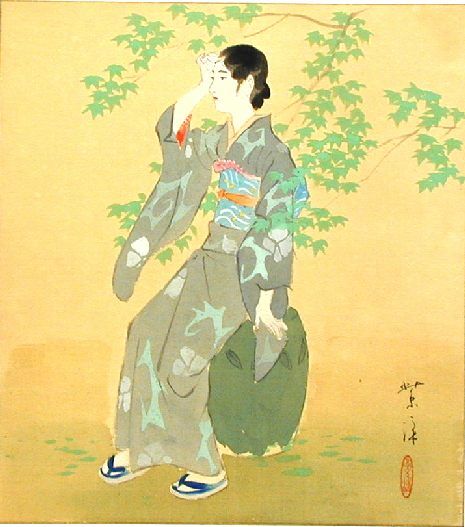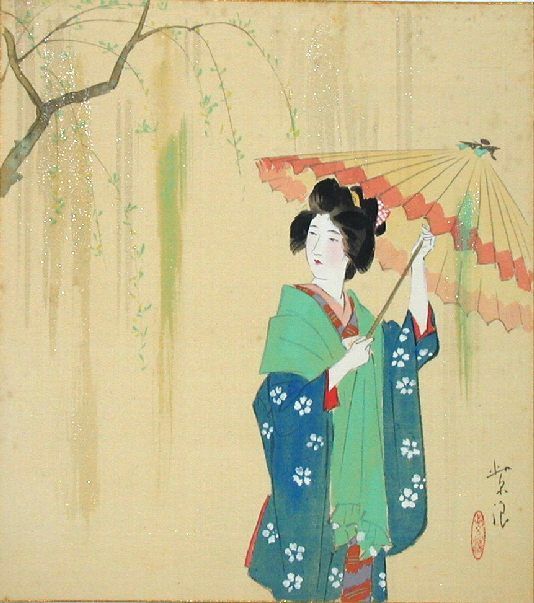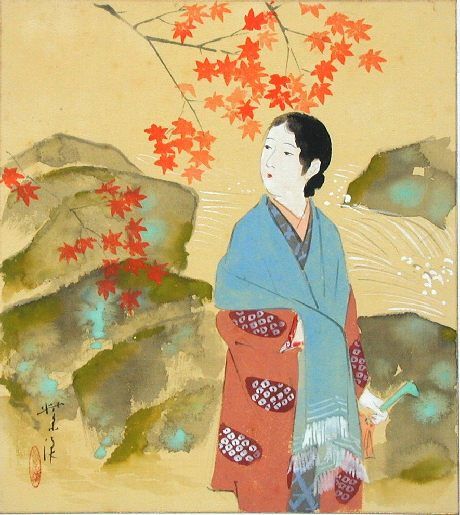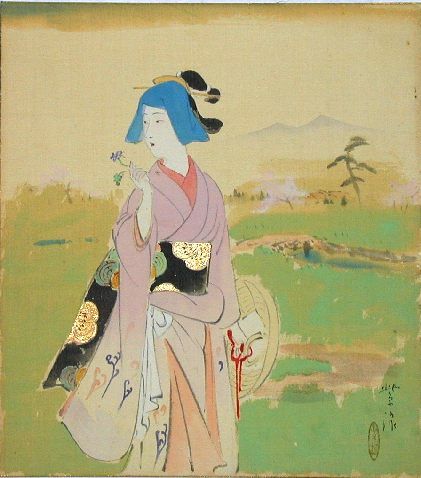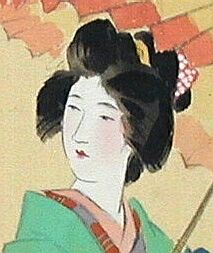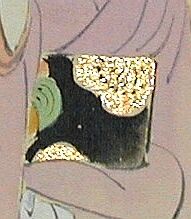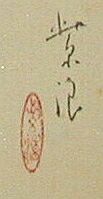Although Shiro Kasamatsu was himself also a printer who studied painting under Kaburagi Kiyokata, he is seemingly known today soley for his reputation as a woodblock print artist. And, despite his lifetime output of more than 300 woodblock print designs, we have only a very limited evidence of watercolors painted by Kasamatsu. As it was the typically the practice, most probably the basic designs of all his woodblock prints were originally executed as watercolor paintings, either as a rough draft, or more detailed paintings. However, while we possess substantial knowledge about the watercolors of Kawase Hasui, (see the article written by Robin Devereux at http://www.shinhanga.net/hasuiwc.htm), who often made obviously for monetary reasons repeated identical watercolors, our previous knowledge of watercolors by Kasamatsu, whether intended at a later stage to be converted into prints or to be kept as independent painting, has been zero.
Nevertheless, in the past year I happened to "discover" several watercolor paintings of Kasamatsu, which I now want to share with the readers in this short introductory article.
|
|
|
|
WA-1 Girl and Maple Tree |
WA-2 Girl with Umbrella under Willow Tree |
|
|
|
|
Girl and Maple Tree in Autumn |
Girl in Pink Kimono |
All of the above four paintings are of the almost square size 24 x 27 cm (about 9 1/2 x 10 3/4 inches), and are executed upon fine silk which is backed on a heavy cardboard, as it is typically used for Nihon-ga or sumi-e. The rims of these cardboards are also edged with a narrow golden decoration, which of course after all these years shows some abrasion. The prints do not mention any title, or year--except for the artist's seal and signature, nothing else is specifially mentioned. Hence, the titles of the prints are simply "given" (suggested) by this author. The paintings show young females, wearing beautiful Japanese-style clothes.
|
|
|
|
WA-2 Detail: Perfect brush strokes |
Wa-4 Detail: Golden Obi |
Most probably these designs were not made as a draft for a later print, as they are simply much too detailed; also "mica" is applied in WA-2 and a lot of golden ornamentation in WA-4. Much more likely instead, they are themselves intended as precious small jewels, made as an independent pieces of art. The four prints above could be a complete series, or part of a larger series, e.g., of costumes, customs or seasons.
The background of WA-4 shows a mountain with a double peak which could well be Mt. Tsukuba, just north of Tokyo. This was a location of which Kasamatsu was seeminly fond, as he depicted it later again in his prints.
Possible Dating
|
|
Seen to the left are the "seal" and "signature," identical on all four of these paintings. The black signature reads "Shiro" and the red seal "Shiro" as well. This ovoid seal we already know previously from a "tanzaku" size Kasamatsu print "White Eye and Sazanka", which Watanabe published around 1930. So we therefore guess that these paintings stem also from the early Showa period, but of course this is speculation. They also could be made much earlier, but most probably not later than the 1930's. |
(c) Andreas Grund and Thomas Crossland -- July 2003
